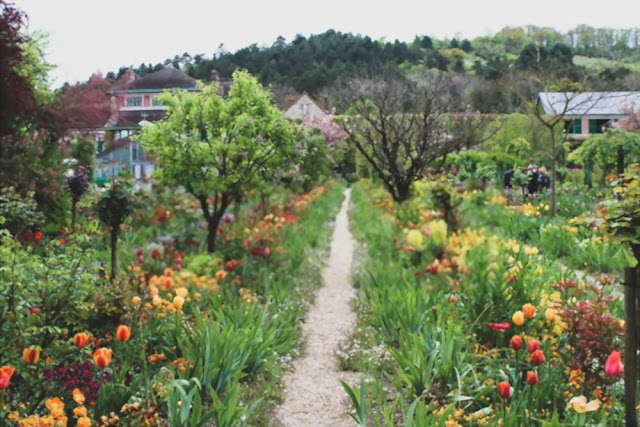There are three basic ethics and 12 main principles. These principles were first presented by Bill Mollison and David Holmgren then consolidated these principles in his book. These are the twelve main essences of every permaculture design that we know as "12 basic principles of permaculture". These principles are as follow:-
- Observe and interact
- Catch and store energy
- Obtain a yield
- Apply the self-regulation and accept the feedback
- Use and value renewable resources and services
- Produce no waste
- Design from patterns to details
- Integrate rather than segregate
- Use small and slow solutions
- Use and value diversity
- Use edges and value the marginal
- Creative use and respond to the change
These principles show that permaculture is not only a farming technique but it's a whole socio economic and also political system. It's a whole culture that we can adopt and it can totally change our perspective on many things.
Observe and interact
It is a very basic thought process that we should always do before starting a project. It is to observe the surroundings. Get to know the topography of the area, to get the basic know how of the temperature zones that our land comes in. So basically knowing how we can implement permaculture in an area and how can we incorporate systematic changes to make it work.
Catch and store energy
There can be many types of energy like solar energy, electrical, potential energy of water and many others. The storage of water can be a good source of energy as this stored water can be used for many days for months to come. Also our forest and plants(the Biomass) can store energy like nutrients and water.
 |
| Permaculture principles design |
Obtain a yield
Yield can not only be the harvest we get former plantation. it is also the fuel from the wood we get and building material.
Yield is a very simple thing to say but it totally changes over mindset. Our brain is made this way that after doing hard work we expect reward. This reward can give us motivation to do more work. It encourages us to make smart decisions about plantations using smart techniques.
Apply the self-regulation and accept the feedback
This is the concept of minimalism theory. To check on yourself about the type and quantity of consumptions. Minimising our carbon footprint, choosing self sustainable methods and moving towards minimalism way of life can be self regulation.
And accepting feedback from the others that have gone through this process. Also from our own experiences and knowledge. Trying to refine the recipe of success with time to help others and yourself.
Use and value renewable resources and services
It is to incorporate other systems which complement the permaculture. Like use of aquaculture sustainable forestry and renewable power sources. All of these principles are connected with one and another. Achieving more self sustainability will also include the use of other alternate power sources which are renewable and green.
After all applying the main Ethics of permaculture like the people care and Earth care.
 |
| Renewable permaculture system |
Produce no waste
You may have heard of the code that “ one man's trash is another man's treasure”. In nature nothing is waste or trash we have to use it smartly to gain from it. Permaculture is all about waste of a system is the lifeline of the other systems. Improvising many things from a system to reduce, reuse and recycle for the other. Like making use of the organic waste to reuse it as compost which becomes the fertilizer for plants. Also expanding this policy in other parts of our life.
Design from patterns to details
Using the first principle of permaculture “the observe and interact”. We can further make relationships of the topography with the plants and rain water from the hill to accumulate in the depression or ditch. Doing horticulture with the permaculture techniques. Observing the natural patterns and making things work around it.
Integrate rather than segregate
Uniting our different systems like aquaculture, permaculture and others to make a unique ecology. Getting benefits and rewards for many systems rather than only one.
 |
| Integrate rather than segregate principle of permaculture |
Use small and slow solutions
Planting the trees can be slow solution. we don't get our harvest for our fruits the next day we planted trees. It takes time but it can be done passively. Using small changing we can do it passively and with time it will only multiply and our profit will only increase with it.
Use and value diversity
Diversity is resilience. Diversity in our plants, trees and other crops will overall make a stronger system. benefiting from each other and helping. also making use of the rabbits,chicken, fishes and other animals on the farm will create a value for our overall system. If one system fails then there will be others thriving. Also making sure of our food security.
Use edges and value the marginal
As explained earlier that all of the systems are connected and beneficial for each other. The edges of the area combining the two zones, two layers for two systems can also be used for our betterment. The water from the farm or land percolates to the water table and also goes through to the nearby areas. Making these areas more fertile in the process.
Creative use and respond to the change
Applying all of these permaculture principles we can improvise more and more. Changing approach in different temperature zones, windy conditions, more or less sunlight, more or less use of water and in any scenario nature presents us.
These are very simple permaculture principles which can help in understanding the whole concept of permaculture and to make use of it in our daily life. These Principles are the stepping stone for any permaculture design and setup.


Comments
Post a Comment